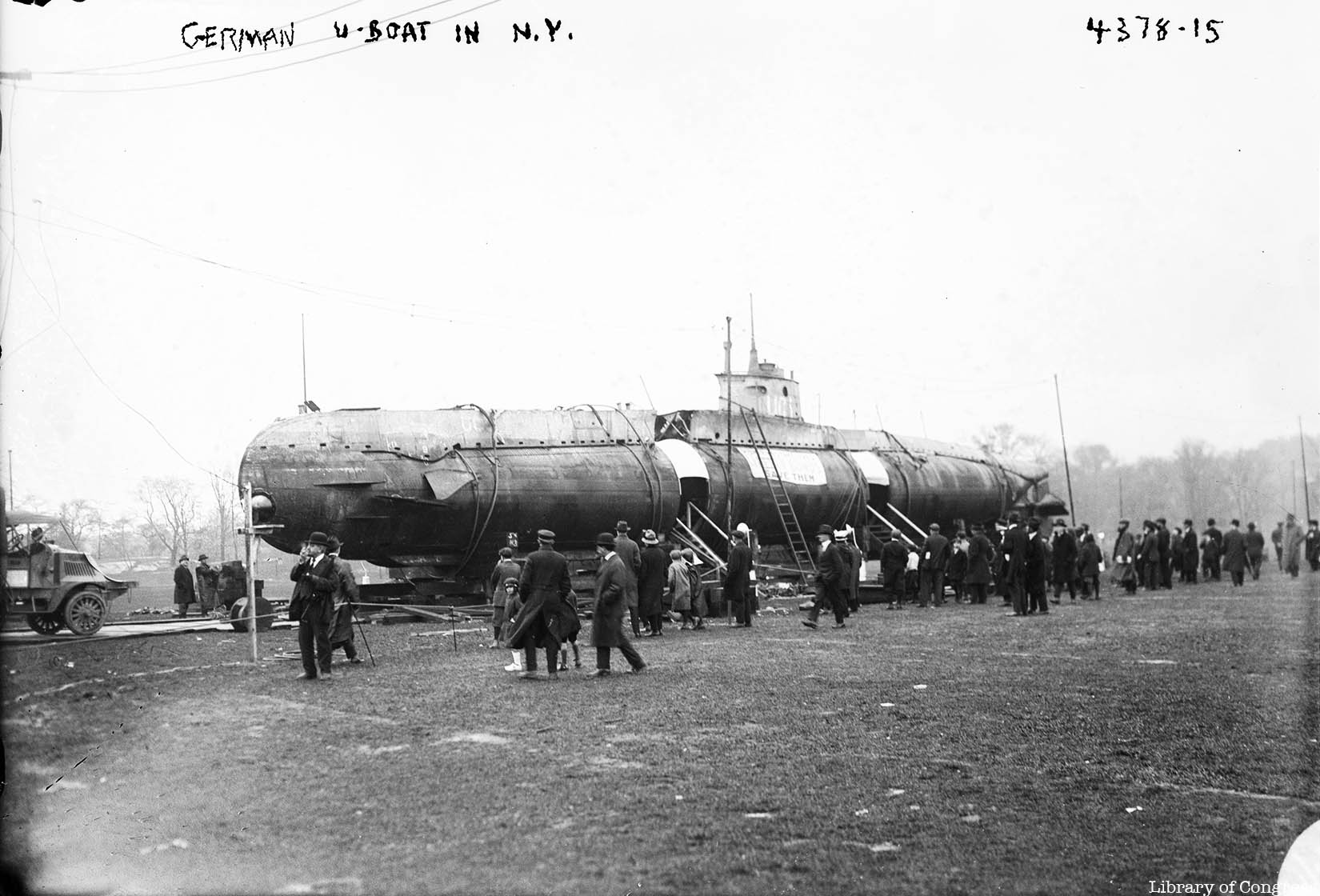In 1917, visitors to Central Park were greeted by historic sites like the Bethesda Fountain, statues of historical figures, and quite surprisingly a German U-Boat. During World War I, the SM UC-5, a German Type UC I minelayer submarine in the German Imperial Navy, took part in the Liberty Loan Parade in Central Park. The parade was part of an massive effort by the federal government to sell “Liberty Bonds,” which would fund millions of dollars towards the war effort. “Millions of billboards, fliers and ads sprouted up around the country, exhorting patriotic Americans to prove their devotion to their country by lending their dollars to the fight,” writes Alex Q. Arbuckle for Mashable.
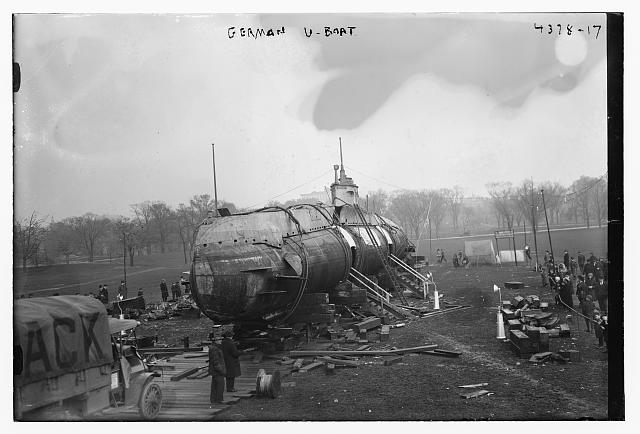 SM UC-5 reassembled in New York City / Library of Congress
SM UC-5 reassembled in New York City / Library of Congress
The SM UC-5 joined a three-engine Caproni bomber plane that flew low among the skyscrapers on “Liberty Day” in 1917, along with a parade of military motorcycles and tanks along Fifth Avenue. The submarine displayed signs like “Submarines take lives, liberty bonds save them and “U-Buy-A-Bond.” The submarine was influential in the sales of Liberty Bonds, as more than 20 million Americans had purchased them by the end of World War I, raising over $17 billion.
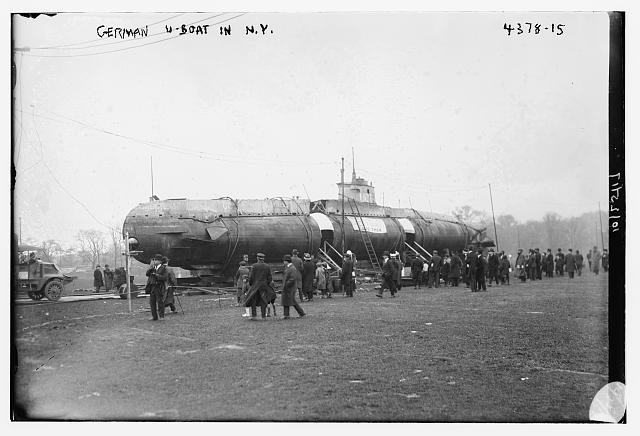 SM UC-5 in Central Park / Library of Congress
SM UC-5 in Central Park / Library of Congress
Yet the SM UC-5 was not just a random submarine; it recorded 29 ship sinkings to its name. The boat was ordered by November 1914 and launched on June 13, 1915, commissioned into the German Imperial Navy just six days later. During World War I, Germany struggled to develop a navy that could outcompete England due to finances, yet Germany developed a strategy of building hundreds of cheap submarines that could cut off the United Kingdom and its supplies from the rest of the world.
Commanded by Herbert Pustkuchen and Ulrich Mohrbutter, the SM UC-5 had a displacement of 183 tons while submerged, considered tiny by today’s standards, and had an overall length of 34 meters. The submarine could operate at a depth of 160 feet and had a maximum speed of 7.47 mph while surfaced. The ship was built by AG Vulcan Stettin and included a fourteen-member crew.
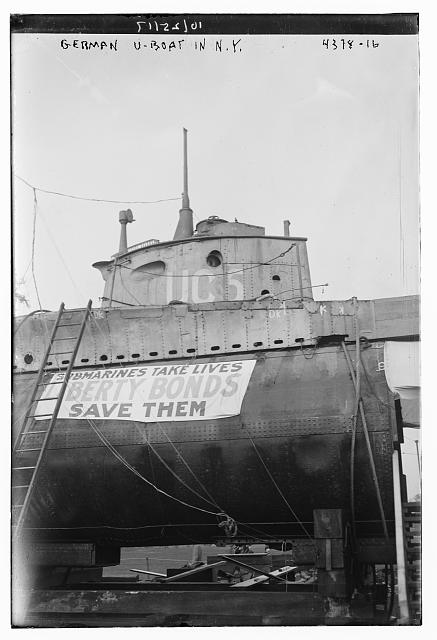 SM UC-5 with Liberty Bonds sign / Library of Congress
SM UC-5 with Liberty Bonds sign / Library of Congress
While in service, the SM UC-5 featured a career of 29 ships sunk for a total of 36,288 tons on 29 patrols. It was the first submarine minelayer to penetrate the English Channel, laying 12 mines off the city of Boulogne-sur-Mer in France. The submarine would later lay six more mines off of Boulogne-sur-Mer and Folkestone, Kent in England. The SM UC-5 sunk ships belonging to the United Kingdom, Sweden, the Netherlands, Norway, France, and the Royal Navy.
Despite the SM UC-5‘s prowess on the seas, its crew was captured by the HMS Firedrake of the Royal Navy while attempting to lay a minefield outside the port of Harwich. The ship was captured and put into a floating dock, and the ship was subsequently towed to Sheerness where it was inspected. It was displayed on the Thames and later chopped into three sections. According to a 1918 report to the New York State legislature, the U-boat was sent to the United States “with the compliments of the British navy.” On arrival to New York, it “was hauled from the North river at 132nd street via Manhattan street, 125 street, 7th avenue, 110th street, and Central Park West to the 66th street entrance to the park and ‘docked’ on the Sheep Meadow.”
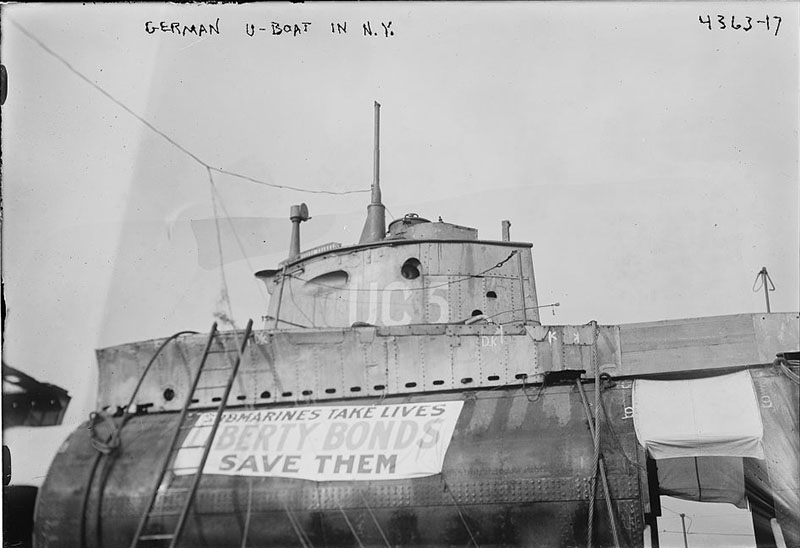 Photo from Library of Congress
Photo from Library of Congress
Each section of the U-boat placed by wrecking crane onto a team of forty-two horses which brought the submarine to Sheep Meadow, where it was later reassembled. It was renamed U-Buy-A-Bond and was displayed alongside a British tank which saw action in France. You could only see the boat if you could show proof that you were a Liberty Loan bondholder. If you weren’t one, you could quickly and easily subscribe to a bond to gain entry to the site.
U-Buy-A-Bond would serve additional propaganda purposes, appearing in the Liberty Loan Parade. It then went up north on two river barges, as reported by The New York Times in 1917, “to Canada by way of the Hudson River, Lake Champlain, and the St. Lawrence River.” It made a first stop in Troy, then headed over the border to be displayed in Montreal and Toronto. There were plans to take the U-Boat down the Mississippi, The U-boat likely was scrapped after the war, as its remains have not been found.
Join us on an upcoming socially distanced tour of Central Park! All of our tours have small group sizes and use state-of-the-art radio earpieces to enable all guests to stand at a distance from each other:
Next, check out A Boat Commanded by JFK Was Unearthed Off Manhattan Recently!
Untapped New York first published about this German U-boat in 2014 in an article by Benjamin Waldman.






